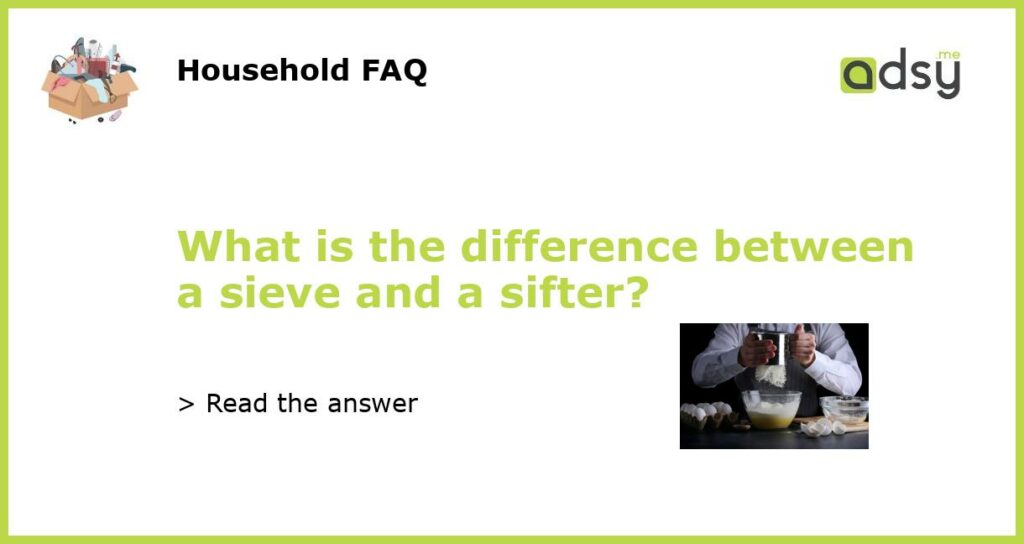What is the difference between a sieve and a sifter?
When it comes to baking, cooking, or any activity involving flour or powdered substances, the terms ‘sieve’ and ‘sifter’ are often used interchangeably. However, while they may serve similar purposes, there are distinct differences between the two tools.
Sieve
A sieve is a mesh-like utensil with fine holes or openings. It is commonly made of metal or nylon and is used to separate fine particles from larger ones. Sieves are typically used in baking and cooking to remove lumps from powdered ingredients, such as flour or cocoa powder, and to ensure a smooth and even texture.
When using a sieve, the dry ingredients are placed in the sieve, and it is tapped or shaken gently to allow the smaller particles to pass through the holes while retaining the larger particles. This process helps break up any clumps and aerates the dry ingredients, resulting in a lighter and fluffier final product.
Sieves come in various sizes, and their mesh sizes can vary as well, allowing for different levels of filtration. Finer sieves may be used for sifting powdered sugar or finely ground spices, while coarser sieves are suitable for straining larger particles like breadcrumbs or seeds.
Sifter
A sifter, on the other hand, is a container with a fine mesh or screen bottom and a handle or crank. It is specifically designed to evenly distribute dry ingredients and remove any lumps or impurities. Sifters are commonly used in baking to aerate flour and other powdered ingredients, ensuring a lighter texture in cakes, cookies, and pastries.
When using a sifter, dry ingredients like flour are placed inside, and the handle or crank is turned to agitate the contents. This action causes the flour to pass through the mesh, breaking up any clumps and incorporating air into the mixture. The result is a smoother, lighter, and more consistent product.
Sifters are particularly useful when a recipe calls for sifted dry ingredients, as the process ensures an even distribution of ingredients and removes any potential lumps. They also allow bakers to measure flour and other dry ingredients more accurately, as the aeration can significantly affect volume measurements.
Key Differences
While both sieves and sifters are used to separate and refine dry ingredients, the main differences lie in their design and intended use.
Design:
– Sieves typically have a fine mesh or perforated surface with smaller openings, while sifters have a screen bottom with evenly distributed mesh or wires.
Purpose:
– Sieves are primarily used to filter and separate fine particles from larger ones, while sifters are designed to aerate, break up clumps, and evenly distribute dry ingredients.
Control:
– Using a sieve provides more control over the fineness of the filtered ingredients, as different mesh sizes can be chosen. Sifters, on the other hand, provide a consistent and uniform distribution of ingredients.
Application:
– Sieves are commonly used in recipes that require sifting powdered ingredients with varying levels of coarseness. Sifters are mainly used in baking recipes that call for aerated and evenly distributed dry ingredients.
Versatility:
– Sieves can be used for both wet and dry ingredients, allowing for straining liquids and removing solid particles. Sifters, however, are specifically designed for dry ingredients and may not be suitable for wet mixtures.
In conclusion, while sieves and sifters share similarities in their function of refining dry ingredients, they have distinct differences in design and purpose. Sieves are primarily used for separating finer particles from coarser ones, while sifters are designed to aerate and evenly distribute dry ingredients. Understanding the differences between these two tools can help bakers and cooks choose the right utensil for their specific needs, ensuring the desired texture and consistency in their culinary creations.






